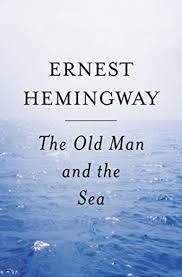Anastassiya Schacht
Anastassiya Schacht and I were both walking toward the registration building at a history of science conference when we began talking about conferences. I told her about attending a live conference for the first time since COVID in June and how nice it was compared to on line.
She agreed, but said, on the other hand, she got to participate in more conferences during the pandemic as not travel was required.
Then she told me how one particular conference, the Austrian Annual Conference of Contemporary History, dealt with on-line in April 2020. The organizers had put together a software imitating classic 1980s computer games with simple icons like PacMan for characters – participants.
Attendees could walk around a stylized computer game location, approach each other – and then a video chat would pop up, allowing people to meet and converse virtually.
Later at a lunch we talked about her thesis. Anastassiya is a PhD candidate at the University of Vienna.
Her thesis traces the history of how the profession of psychiatry in the Soviet Union from the beginning to the end of the former empire evolved.
At this point I should say the future Dr. Schacht was born in Aktobe, Kazakhstan, to Ukrainian and Russian parents. The family spoke Russian at home.
She worked as a social worker before switching to the university and enrolling as a PhD candidate in history, so she has work experience with people in difficult circumstances.
She studied English, German and Literature in Orenburg, and English linguistics and then Global History in Vienna.
Since completing her Master’s Degree she has been working on theories of cultural otherness, transformation processes and colonial studies in the post-Soviet space.
With this background, her PhD supervisor suggested she might want to have a glance at the history of Soviet psychiatry – a tip she now calls one of the smartest suggestions of her life.
Anastassiya recalls certain reluctance to go for this topic, as she has been avoiding working on “Russian topics” “just because she knew the language”. Yet the topic turned out to be of immense depth, dramatism, and analytical potential. Anastassiya works on the conflict revolving around the established practice of using psychiatry for suppressing political dissidents, cultural and religious non-conformists in the late Soviet Union.
With many stories of the political abuse written, she approaches the issue from two viewpoints. First, she examines how individual doctors justified their cooperation with the regime – and how top rank psychiatrists helped their less renowned colleagues to not have a crisis of conscience when confining unwanted “troublemakers”.
Second, Anastassiya studies how the rest of the world and especially psychiatrists in larger international organizations interacted with their colleagues tainted by cooperation with a totalitarian empire that used their expertise for oppression and torture.
As Anastassiya talks about her path to a PhD, she is bright, optimistic and funny. It is strange to think of her being interested in such a dark topic; but not too strange, since my friend Cliff and I, too, pursue academic interests that often come off as somewhat unexpected (In the past five years we visited almost a dozen death camps).
In her talk at the conference, Anastassiya told the audience how the Soviet Union has been engaging and disengaging with international organizations promoting Public Health throughout the whole 20th century. In the 1930s, the Soviet Union and the League of Nations (the world body like the UN between the world wars) hated each other, but had reasons to try to work together.
The League of Nations Health Organization (LNHO) wanted to stop typhus and other epidemics in the Soviet Union from infecting Europe, so they made compromises with the Soviets in other areas, such as psychiatry.
After World War II, the Soviet Union was a hostile and troublesome member of the United Nations.
The Soviets joined the World Health Organization (WHO) in 1948, then quit the organization the following year in a public dispute. After Stalin's death the Soviet Union attempted to rejoin the WHO, but in 1971, the Soviet suppression of Czechoslovakia led to the Soviets being expelled from the WHO again.
In 1977, a psychiatric conference in Hawaii overwhelmingly condemned Soviet abuse of the discipline. The New York Times reported:
HEADLINE: World Psychiatrists Vote To Censure Soviet ‘Abuse’; Moscow Charges ‘Slander
HONOLULU, Sept. 1 (AP)—The General Assembly of the World Psychiatric Association voted today to censure the Soviet Union on charges of abuse of psychiatry for political purposes and to establish a committee to review such practices in any country.
By a vote of 90 to 88, the governing body of the association adopted an amended resolution by Britain's Royal College of Psychiatrists condemning “the systematic abuse of psychiatry for political purposes in the U.S.S.R.”
The General Assembly also voted, 121 to 66, to approve a resolution submitted by the American Psychiatric Association. The American resolution did not mention the Soviet Union by name, but said the association opposed “the misuse of psychiatric skills, knowledge and facilities for the suppression of dissent wherever it occurs.” About 4,000 delegates from 63 countries are attending the‐ World Psychiatric Association's sixth congress. Each country has representatives In the General Assembly.
Both resolutions were strongly resisted by Dr. Eduard Babayan, the Soviet Union's delegate to the General Assembly, who called the accusations “slander.’
In her talk, Schacht talked about the self-legitimation that the profession of psychiatry and the Soviet doctors themselves used to justify their support of Soviet abuse of the profession. She talked about political abuse of this discipline in the by the Soviet Union as well as the impact of state actors and their agendas in science under authoritarianism. She also addressed the problems of academic autonomy and responsibility.
The very dark talk ended on a brighter note as Anastassiya showed how Soviets explained its population why it internationally acted the way it did through caricatures in a satire magazine Крокодил (Crocodile).
In-person conferences are the best!






.jpg)

.jpg)
.jpg)













































